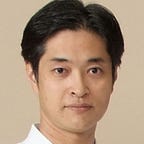Motobu Chōki’s Ateha
Ateha (or more correctly pronounced atifa) is an Okinawan dialect word meaning thrusting power or punching power. It is written in kanji (Chinese characters) as 当破 (literally, to hit and break). According to the Sōke (Motobu Chōsei), his father, Motobu Chōki, used to say, for example, “No matter how beautifully you can execute a kata, it is no good if you do not have ateha.”
The question is whether the kanji for ateha is correct, and according to the Sōke, the meaning of ateha is “to pierce through,” so I believe that ateha (当破) is correct. This is because in Shuri, the word for “strike” (殴る) was elegantly said as “atiyun (to hit)” (アティユン). In Naha, on the other hand, it was said as “kurusun (to kill)” (クルスン). It may sound boisterous, but Naha is like Asakusa in Edo (Tokyo), a downtown area, so the more vigorous way of saying things was probably preferred. Shuri, on the other hand, is the location of the king’s castle, so the elegant way of saying things was preferred.
Therefore, ateha (atifa) was probably originally used by the people of Shuri. I don’t know if the people of Naha called it “kurusun-fa” (殺破). Come to think of it, there is a kata called Kururunfa in Gōjū-ryū of Naha-te.
Now, there are many misconceptions about ateha today. Many people interpret ateha as the power of seiken-zuki (straight punch), especially gyaku-zuki (lit. reverse thrust) from the position of hiki-te (pulling hand). However, in the old style karate that Motobu Chōki studied and practiced, there were not only seiken-zuki, but also uraken (back fist), kōsā (ja: ippon-ken, one finger knuckle fist), enpi (elbow strike), shutō (knife hand), nukite (spear hand), and many other types of thrusts. Even in the case of seiken-zuki, there was also a thrust from the front hand in husband and wife hand posture (today’s kizami-zuki).
The true essence of Motobu Chōki’s ateha was the short punch, which was executed from a position just in front of the target. An episode that illustrates this is described in the “Sayings of Motobu Chōki Sensei” (1978) by Nakata Mizuhiko.
“Nakata, you have come to the right place. Try to crack this with your fist from a distance of about three centimeters. If you can crack it, I will treat you to a lot of awamori (Okinawan sake).” One day, when I visited Motobu Sensei in Hongō Esashi Town (present-day Bunkyo Ward, Tokyo), he showed me a board hanging from the eaves of the porch of his tatami room (which also served as a dojo). Upon closer inspection, I found a rectangular pine board about 60 cm wide, 90 cm long, and 6 cm thick, with a hole drilled in the center about 6 cm below the top edge, through which a sturdy string was threaded, hanging from the eaves rafter. I thought it was impossible, but as I was told, I stood on the porch, positioned my right fist, with my left fist attached to my right arm, about an inch from the pine board, and with all my might, I thrust at it. But instead of breaking, the board bounced back with a clatter, and all I got was the pain of my fist.
I don’t remember, but someone else who was there, who must have been a student, followed suit, and no matter how many times he tried, the board bounced back with a clatter, just as it had done to me.
“Now watch carefully,” Motobu Sensei said. Then he stood in front of the board and brought his right fist to a standstill less than an inch from the board, and the next moment he sank down with a “whoosh.”
Then, just as the fist struck the board, the board split in a vertical line through a hole in the string and fell in two pieces to the ground under the eaves of the roof.Note: Motobu Sensei was not usually interested in breaking boards and roof tiles. He thought of it as a show to attract spectators at demonstrations, but Motobu Sensei’s board-breaking, which I saw for the first time, was not a show, but the very essence of Motobu-ryū Kenpō. To split a hanging pine slab in half from such a close distance was the power of a true atemi (striking technique), and probably could not be duplicated by anyone. At that time, I was able to witness firsthand the power of his extreme short punches, which were made possible by the interlocking of his two hands and the use of the spring in his lower body. I also learned that the various elements that make up the ate (striking) were created by a martial arts prodigy through actual fighting, and that it is a terrifying thing.
The above episode probably took place when Motobu Choki was over 60 years old. Even at that age, his thrusts had such power. According to the Soke, Motobu Choki was also negative about roof tile splitting, as Mr. Nakata says. “Tiles are for roofing, not for breaking,” he said. As one would expect from a man of the olden days, he was against treating things roughly in order to show off his power.
The practice of makiwara (rolled straw) improves the power of ateha. The makiwara practice of Motobu Chōki is also different from the modern makiwara practice often seen on YouTube. Many karate techniques have been lost or their characteristics have changed drastically in modern times.
Thank you for reading my story. If you would like, please follow me.
